
to the September
Welcome
1st, 2023 issue of Radio World
meow
Well...not really. Our LiON has the latest Wheatstone DSP algorithms; it is not a 90’s era processor by any means. The AUDIOARTS LiON Five-Band Processor/Multipath Controller has WheatNet-IP, so it can be networked. It has analog and AES3 so it can stand alone. It has Wheatstone SystemLink™ built in, to send full 24-bit linear audio directly to your transmitter over reliable high-speed links — Baseband 192 MPX with FM+HD timing locked (no codec to degrade audio quality). And it comes with 50 presets so you can plug and play. Let your signal ROAR on a kitten budget!

SO...what’s really in the box?
ALL SIGNAL PATHS
• Analog, AES3 and Wheatnet-IP audio
• AES3 input accepts 32kHz to 96kHz sample rates
• Variable high pass filter and voice phase rotator
• Dynamic L/R correlation meter for proper stereo channel phase
• Front panel setup
• PC-based GUI included
• Ethernet-based remote control
• Four-band equalizer: low/high shelf plus two-band parametric
• User-adjustable multiband crossover frequencies
• Independent multiband compressor and leveler can be operated separately or in combination
• Multiband spectral manager
• Newly developed bass management
• High-performance low distortion multiband limiters
• Metering for all input and output levels and dynamics processing
FM PATH
• New distortion-masked FM peak clipper
• Specialized live voice algorithm minimizes vocal distortion
• Exclusive stereo multipath controller
• RDS/RBDS generator, static and dynamic
• Precision FM stereo MPX generator with multiplex mask filter
• Baseband192 built in for 192kHz digital MPX link to transmitter
• Support for ITU.BS-412 MPX
• Ten seconds of FM/HD diversity delay
• Test oscillator
HD/STREAM PATH
• Low/high shelf plus two-band parametric equalizer
• HD/Stream final processing accepts audio from unprocessed input, output of AGC, or output from multiband limiters
• Oversampled precision look-ahead limiters for exceptional final peak control
• Specialized dynamic high frequency protection for low bitrate codecs; also operates in wideband (>12kHz) and <12kHz modes
• ITU-BS.1770 loudness metering and controller
Manufactured in North Carolina USA



radioworld.com | September 1 2023 | $5.00 Technology & news for radio decisionmakers
IBC
Show organizers put last year’s airport chaos behind them. How is AI Ashley doing? We check in with Alpha Media to see how its experiment with the synthetic host is going. A Franken finale The FCC settles the FM6 question by allowing 14 stations to stay on the air at 87.75 MHz. How I DX in my new Tesla Karl Zuk has a new electric vehicle with no AM radio. He’s undaunted.
Here comes
2023

www.radioworld.com
FOLLOW US
www.twitter.com/radioworld_news
www.facebook.com/RadioWorldMagazine
www.linkedin.com/company/radio-world-futureplc
CONTENT
Managing Director, Content & Editor in Chief Paul J. McLane, paul.mclane@futurenet.com, 845-414-6105
Content Producer & SmartBrief Editor Elle Kehres, elle.kehres@futurenet.com
Technical Advisors Thomas R. McGinley, Doug Irwin Technical Editor, RW Engineering Extra W.C. “Cris” Alexander
Contributors: Susan Ashworth, David Bialik, John Bisset, Edwin Bukont, James Careless, Ken Deutsch, Mark Durenberger, Charles Fitch, Donna Halper, Alan Jurison, Paul Kaminski, John Kean, Nick Langan, Larry Langford, Mark Lapidus, Michael LeClair, Frank McCoy, Jim Peck, Mark Persons, Stephen M. Poole, James O’Neal, T. Carter Ross, John Schneider, Gregg Skall, Dan Slentz, Dennis Sloatman, Randy Stine, Tom Vernon, Jennifer Waits, Steve Walker, Chris Wygal
Production Manager Nicole Schilling
Group Art Director Nicole Cobban
Senior Design Director Lisa McIntosh
Senior Art Editor Will Shum
ADVERTISING SALES
Senior Business Director & Publisher, Radio World John Casey, john.casey@futurenet.com, 845-678-3839
Publisher, Radio World International
Raffaella Calabrese, raffaella.calabrese@futurenet.com, +39-320-891-1938
SUBSCRIBER CUSTOMER SERVICE
To subscribe, change your address, or check on your current account status, go to www.radioworld.com and click on Subscribe, email futureplc@computerfulfillment.com, call 888-266-5828, or write P.O. Box 1051, Lowell, MA 01853.
Licensing/Reprints/Permissions
Radio World is available for licensing. Contact the Licensing team to discuss partnership opportunities. Head of Print Licensing Rachel Shaw licensing@futurenet.com
MANAGEMENT
SVP Wealth, B2B and Events Sarah Rees
Managing Director, B2B Tech & Entertainment Brands Carmel King
Managing Vice President of Sales, B2B Tech Adam Goldstein
Head of Production US & UK Mark Constance
Head of Design Rodney Dive
FUTURE US, INC.
Future US LLC, 130 West 42nd Street, 7th Floor, New York, NY 10036
All contents ©Future US, Inc. or published under licence. All rights reserved. No part of this magazine may be used, stored, transmitted or reproduced in any way without the prior written permission of the publisher. Future Publishing Limited (company number 02008885) is registered in England and Wales. Registered office: Quay House, The Ambury, Bath BA1 1UA. All information contained in this publication is for information only and is, as far as we are aware, correct at the time of going to press. Future cannot accept any responsibility for errors or inaccuracies in such information. You are advised to contact manufacturers and retailers directly with regard to the price of products/services referred to in this publication. Apps and websites mentioned in this publication are not under our control. We are not responsible for their contents or any other changes or updates to them. This magazine is fully independent and not affiliated in any way with the companies mentioned herein.
If you submit material to us, you warrant that you own the material and/or have the necessary rights/ permissions to supply the material and you automatically grant Future and its licensees a licence to publish your submission in whole or in part in any/all issues and/or editions of publications, in any format published worldwide and on associated websites, social media channels and associated products. Any material you submit is sent at your own risk and, although every care is taken, neither Future nor its employees, agents, subcontractors or licensees shall be liable for loss or damage. We assume all unsolicited material is for publication unless otherwise stated, and reserve the right to edit, amend, adapt all submissions.
Radio World (ISSN: 0274-8541) is published bi-weekly with additional issues in February, April, June, August, October and December by Future US, Inc., 130 West 42nd Street, 7th Floor, New York, NY 10036. Phone: (978) 667-0352. Periodicals postage rates are paid at New York, NY and additional mailing offices.
POSTMASTER: Send address changes to Radio World, PO Box 1051, Lowell, MA 01853.
BW Broadcast resumes business
Manufacturer is led by sister of the late Roger Howe
BW Broadcast is back in action.
Paul McLane Editor in Chief
Founded in 1997, the U.K.-based technology manufacturer had gone through an uncertain time after the death of its founder Roger Howe in 2020 and the subsequent death of CEO Scott Incz in 2021. A period of litigation and a temporary cessation of manufacturing followed.
But when I learned recently that Illinois-based Progressive Concepts had been named the sole U.S. dealer and service center for BW, I figured there must have been a lot happening behind the scenes, so I reached out to the company in south London.

In a conference call with BW’s new leadership team, I learned that Tina Tucker, sister of the late Roger Howe, had emerged from probate as sole owner and now is its CEO.
The firm’s directors also include her husband David Tucker, who serves as operations director and whose background is in airport operations, facilities management and electronics; and engineer Nick Gratwick, a longtime colleague of Howe’s.

They told me that Tina and David Tucker had attended the IBC Show in Amsterdam last year hoping to get a sense of whether there was interest in the market for BW Broadcast to continue. They said they were overwhelmed with the positive response. Tina attributes that not only to a strong brand but to a personal affection that she said many clients felt for her late brother.
“Roger was quite special to a lot of people,” she told me.
But this new team needed to get BW’s gears moving again. “We had a building and a great name,” said Legal Manager Leo Valls, “but we had no staff.”
So over the past year or so, the manufacturer has been working its way back. It has been rebuilding its staff — it now has a dozen employees — and it has resumed manufacturing of the product line, which includes FM transmitters and translators (power levels ranging from 10 watts to 1.1 kW), modulation monitors, RDS encoders, audio processors and related gear.
3 From the Editor
5 IBC seeks to explore media transformation
10 With this comb, you’ll get the hang of IT
14 FCC allows 14 FM6 stations to stay on the air
20 Alpha lets AI Ashley do (some) talking in Portland
24 Problemsolvers & utility boxes
29 AM listening is better than ever … in my Tesla!
Please recycle. We are committed to only using magazine paper which is derived from responsibly managed, certified forestry and chlorine-free manufacture. The paper in this magazine was sourced and produced from sustainable managed forests, conforming to strict environmental and socioeconomic standards.
47 No. 22
September
Vol.
|
1 2023
Future’s 2022 B2B Publication of the Year THIS ISSUE
NEWS
FEATURES
BUYER’S GUIDE
OPINION
3
Dennis Noe also returned to BW after a stint with Chemigraphic Ltd. and was named its chief engineer; he is leading development work on new products. Leo Valls said BW aims to have an exhibit at next year’s IBC Show; meanwhile the company’s leadership will attend this year’s IBC Show and welcomes requests for appointments via its website www.bwbroadcast.com/
To emphasize its commitment to the market, the company recently announced that new product purchases are now covered by a four-year warranty.
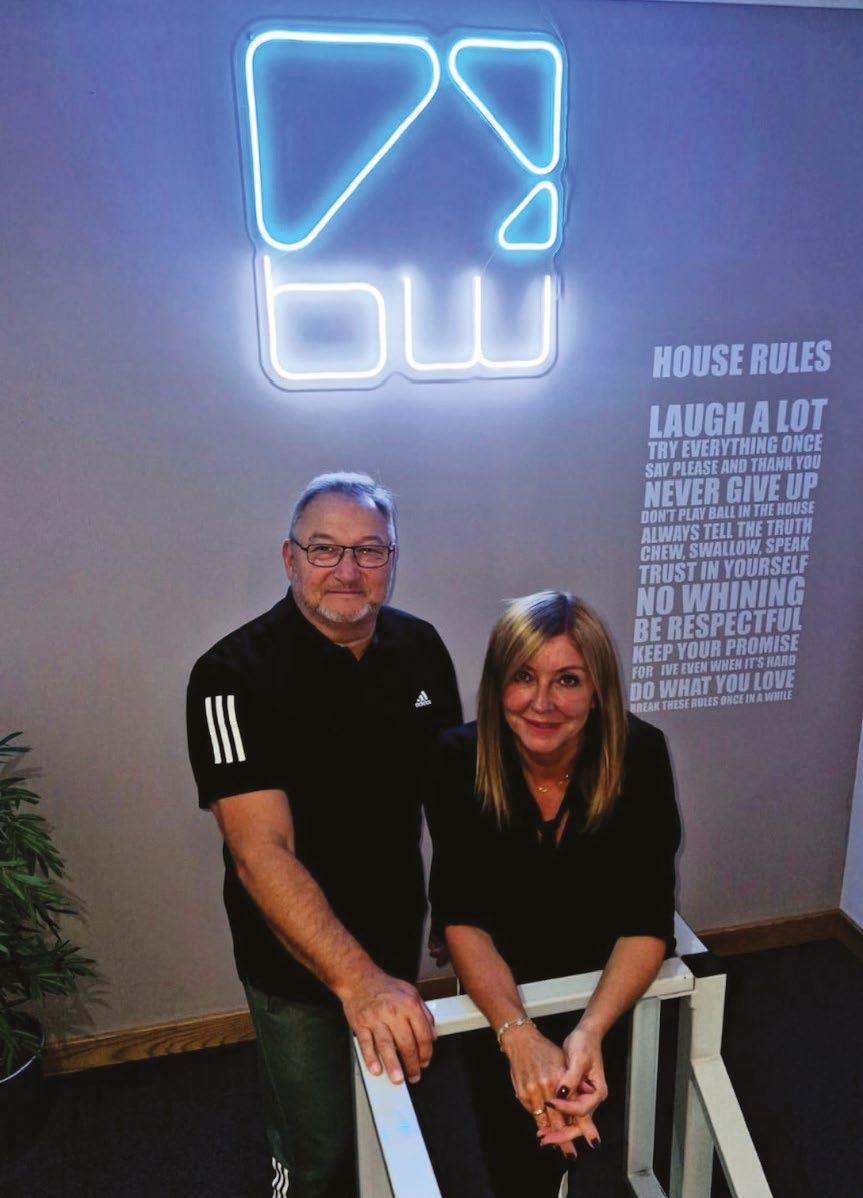
 Right David and Tina Tucker
Right David and Tina Tucker
“
” 4 From the Editor
Tina and David Tucker attended the IBC Show in Amsterdam last year to get a sense of whether there was interest in the market for BW Broadcast to continue.
IBC seeks to explore media transformation
The convention focuses on shifting business models and social issues How
When the IBC Show returned last year, it pulled in about 66% of its pre-COVID crowds, drawing 37,000 attendees.
Most observers considered that a healthy first show after the interruption of the pandemic. But many of those people had their experience soured by serious problems getting home through what some called “chaos” at Schiphol Airport.
The organizers hope for and expect a better conclusion this year. Asked this summer about those travel headaches of 2022, CEO Michael Crimp said the organizers were in touch with airport officials about managing the huge influx of travelers.
“I know that there’s been a lot of investment and there was an independent inquiry to look at the whole situation,” he said. “It seems that they are coming back on their feet. It seems like it’s going to be OK. … From IBC’s point of view, we’re pushing them hard. Schiphol has a long track record of being a great airport and is very accessible to the venue. It wasn’t a small thing that happened last year, and they have a lot of confidence that the investments that they’ve made and the changes they’ve made, including the new CEO, have put them back on their feet.”
IBC 2023’s conference program will be built around three pillars: transformative tech, shifting business models and “people and purpose,” the organizers say.

Above An IBC promotional image.
to Go Show information is available at https://show.ibc. org/registration 5 radioworld.com | September 1 2023 IBC Show
The show was founded in 1967 by John Tucker of EMI, Tom Mayer of Marconi and John Etheridge of The Rank Organization; the first show was held at the Royal Lancaster Hotel in London.
The convention now is held regularly at RAI Amsterdam, where it spreads over 13 halls. Participants come from approximately 170 countries.
“IBC is, in my view anyway, the best of the old-school trade shows with a conference in one place and the show floor next to it,” Crimp said. “But this year, we wanted to look at the structure of the event slightly differently.”

That is likely to mean more keynote speeches, breakfasts, roundtables and events in a more intimate environment.
Crimp said the organizers have been “actively listening” to the show’s global community about what they think a modern trade show should be to help shape the event’s future.
“People came out of the pandemic really valuing largescale events. Three-quarters of the people we spoke to via surveys and focus groups said they see trade shows as the most important platform for sourcing new technologies and products,” he said.
“People seem to enjoy meeting each other and they really enjoy IBC and they look forward to it. And clearly, they missed it while it wasn’t there.”
Top Panelists at last year’s convention.
Above The show again will be held at the RAI Amsterdam.

The conference will kick off with an address by Evan Shapiro, a “media universe cartographer” who maps M&E trends and future developments. Shapiro will lead a session called “Plotting the Effects of Disruption.”
The show’s website says IBC will look to the future of media and entertainment. “Today it is as much about streaming, social media and personal devices as it is about broadcasting, cable and satellite — with next-generation technologies such as 5G, AI and VR/AR emerging fast,” it states.
6 radioworld.com | September 1 2023 IBC Show
Marianne Ottemann



Indeed few sessions are specifically about radio; the show is heavy with content about video, OTT, streaming, FAST channels and the like, with session titles such as “5G Technology: Convergence With Broadcast,” “Winning Over Gen Alpha” and “Growth in Gaming.” But there are also sessions about DAB+ and audio codecs.
Highlighting the People and Purpose content pillar will be a free IBC Changemakers Program, which started last year and returns on Sept. 17 and 18. These sessions will address topics such as gender equality in broadcasting, advancing sustainability and inclusive tech. The IBC Social Impact Awards will be part of that program.
A range of ticket options is available; these include a new “Premium Pass” that the show promotes as “the ultimate experience for broadcast and content professionals.” It includes access to additional “exclusive events and a networking lounge, delivered in premium style.”
There are also “Owner Programs” put on by the six international bodies behind IBC, including IABM, SMPTE, SCTE, IET, RTS and IEEE.
This year the convention replaced its exhibitor

Exhibitor Sampling
This is a sampling of companies relevant to our readers; find the full list at http://show.ibc.org:
2wcom Systems
AEQ
committee with an Exhibitor Steering Group, saying it wants to “broaden the range of views and voices that help shape the event with an industry-inclusive approach to drive innovation and empower people throughout the entire media, entertainment and technology value chain.”
Lisa Collins, managing director at Dovetail Creative and former head of marketing and engagement at IABM, was named chair of that group.
IBC also appointed Mark Smith as chair of its IBC Council, an advisory group of senior media and entertainment executives, succeeding John Honeycutt. The group’s role is to advise IBC on key strategic issues. As communications and marketing director for the GSMA, which represents mobile network operators, he was part of the team that acquired and grew Mobile World Congress into a large technology show.
Jenny Priestley of TVBEurope and Tom Butts of TV Tech contributed to this story.
AETA Audio Systems
AEV Broadcast
ALX NetworX
Aldena
Amazon Web Services
Aqua Broadcast
Audinate
AVT Audio Video
Axel Tech
Broadcast Bionics
Calrec Audio
CGI
Comrex
DB Elettronica
Delta Meccanica
DHD.audio
DPA Microphones
EBU
ENCO
Ferncast
Fraunhofer Digital
GatesAir
Genelec
Glensound
Google
Gracenote
IABM
IEEE BTS
Inovonics
Jampro
Jutel Radioman
Kathrein Broadcast
Lawo
Microsoft
Multicam Systems
MusicMaster
Nautel
NeoGroupe
Netia
On-Hertz
Orban
R.V.R. Elettronica
Radio.Cloud
RCS
Rohde & Schwarz
Sennheiser
Sonifex
Sound Devices
TASCAM/TEAC
Telos Alliance
Thimeo
Tieline
Veritone
Wheatstone
WinMedia
WorldCast Group
Xperi
Yellowtec
“
” 8 radioworld.com | September 1 2023 IBC Show
People came out of the pandemic really valuing largescale events.

With this comb, you’ll get the hang of IT
Also, a warning about MOVs from Jeff Welton John Bisset CPBE


In August I asked you to name your favorite “gear gone by.” Systems integrator Edwin Bukont of E2 Technical Services & Solutions took us up on that. While assisting with an Axia AoIP conversion for Salem Media Seattle, Ed spied something old that was new again.
You may have used a wall-mounted patch cord “comb” like the one shown at right to hold your patch cords in days of yore. Well, Salem Chief Engineer Dave Ratener repurposed this comb to hold StudioHub cable dongles.
Right A patch cord “comb” on the wall is repurposed to hold Angry Audio StudioHub AoIP dongles and adapters.
The author is in his 33rd year of writing Workbench. He handles western U.S. radio sales for the Telos Alliance and is a past recipient of the SBE’s Educator of the Year Award. Patch us in!


Give us access to those great brain cells of yours. Send your Workbench tips (which qualify for SBE recertification credit) to johnpbisset@ gmail.com
Most stations no longer use patch cords, but many use the StudioHub adapters, now provided by Angry Audio. Rather than storing the various configurations in a jumble in a box, why not hang them on a patch cord comb, to make identification and selection easier? Smart!

MX-5050s still in use

Anthony “Kernz” Garza at KRFE(AM) in Lubbock, Texas, was pleased to see our photo of Al Peterson holding Chris Courson’s Otari MX-5050 reel-to-reel machine.
The first thing Kernz noticed were the razor blade marks on the front. Obviously this machine had been used over the years for speed editing!
Kernz owns three of the MX-5050 models and an MX-5 in a rolling rack. He considers the line the “cream of the crop” — until a serious problem develops. Seems some of the transport buttons were designed “upside down,” allowing liquefied switch lubrication eventually to find its way, via gravity, to the switch contacts.
However, a real plus to the overall design is there are NO belts in the machine.




Kernz says the machines are used regularly by him, the station and some clients who have no way of listening to an audio tape.
One of his favorite memories is of an octogenarian who was able to hear her father’s voice again after many years. She cried as Kernz dubbed the audio to be sent via email to her family. (Talk about providing a public service!)










The radio station has many reels that are unmarked; some are ancient. Kernz even found a few voicings by Buddy Holly when he and his best friend Bob Montgomery played live over KDAV (now KRFE) for a Sunday bop program.
Yep, Kernz concludes, the MX-5050 was and is a great machine to have around.
Welton warns about MOVs

I was chatting with Nautel’s Jeff Welton at the Texas Association of Broadcasters conference last month. He mentioned that he’d seen Fred Baumgartner’s Workbench submission in June on protecting analog phone lines. Jeff pointed out that sometimes metal oxide varistors are used instead of neon bulbs. But Jeff cautioned that if you do opt for MOVs, be sure to put fuses in series with each one.

NV SeriesLT 3.5 kW – 40 kW nautel.com/NVlt Outstanding Efficiency at Exceptional Value
10 radioworld.com | September 1 2023 Workbench

The reasoning is that 100% of the time, MOVs fail in a “short-circuit” mode. If not fused, they will fail in an open circuit mode, where they may completely vaporize! Neon bulbs are not an issue, they simply light brighter as the surge voltage increases. Jeff add that in a serious overvoltage condition, like a nearby or direct strike, the line into the demarc point probably exploded anyway!

WD-40 now in a pen

We all have used legendary WD-40 as a padlock lubricant or to loosen rusted parts. My experience is mostly with the aerosol can form, which is fine if you don’t mind spray on adjacent parts. But even the flexible straw aerosol version can cause some overspray.
Listening to its customers, the folks at the company now offer the pinpoint accuracy of a porous chisel-tip so you can apply the product exactly where it’s needed. The WD-40 Precision Pen delivers that original WD-40 formula in a compact pocket-sized design.
A package of three pens costs less than $15 on Amazon.
Critters and nests
Above MOVs look like disc capacitors. They are sometimes placed across power transformer inputs to protect against surges. Left WD-40 now comes in “pen” form. No more overspray!
It goes without saying that most engineers have discovered nests of some kind in their travels, as we described in July.
Rhode Island Systems Engineer Ihor Slabicky tells of a summer cottage that had not been used in years. Ihor’s task was to ready the cottage for residency. This included removing a “mouse house” from a bedroom dresser drawer. The mice had carried the stuffing from the mattress into the drawers. Talk about a mess — but probably cozy for the mice!
”
“The folks at WD-40 now offer the pinpoint accuracy of a porous chisel-tip so you can apply the product exactly where it’s needed.
12 radioworld.com | September 1 2023 Workbench
Ladislav Kubeš/Getty Images
 Writer Paul McLane Editor in Chief
Writer Paul McLane Editor in Chief
FCC allows 14 FM6 stations to stay on the air
But it declines to allow other such “Frankens” or to repurpose Ch. 6 spectrum




Fourteen low-power digital TV stations in nine states can continue to provide analog radio services at the bottom of the FM dial, under a plan approved unanimously by the Federal Communications Commission in July. They essentially are grandfathered in after a two-year trial period, resolving a longstanding regulatory question about whether the radio-like operations of “FM6” or “Franken” stations were appropriate given their TV licenses.
But in taking this action, the commission declined to make more substantial changes in the use of the 82–88 MHz spectrum.
National Association of Broadcasters President/CEO
Curtis LeGeyt called the outcome a “fair and efficient resolution” and said it would “protect Channel 6 television operators while recognizing the audience built by existing FM6 stations.”
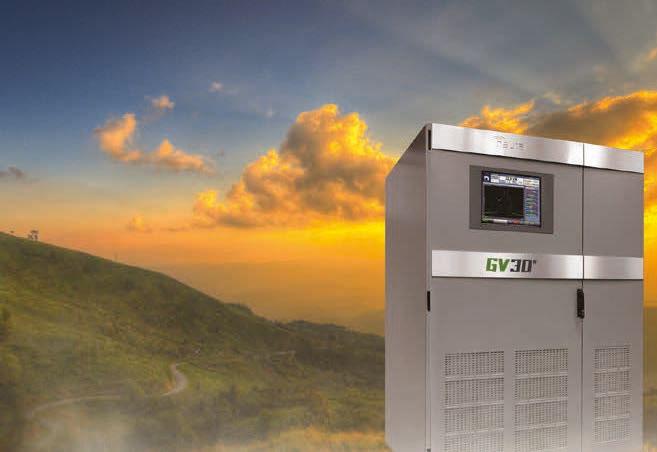
No more baling wire
The commission said the radio programming of these stations had “a long history of public interest benefits.”

The practice apparently began in the 1980s, and at one time about 30 such stations were operating, aiming to reach listeners whose radios could pick up Channel 6 audio spectrum just below the licensed FM dial.
Some broadcasters felt it was a dubious or illegal practice; but looking back on it, Chairwoman Jessica Rosenworcel sounded approving: “Ultimately this led to more broadcast services to more people in the community.”

Smaller Footprint GV30 GVSeries 3.5 kW – 88 kW Digital/Analog FM nautel.com/GV 14 radioworld.com | September 1 2023 Franken FM
Alexandr Gnezdilov Light Painting/Getty Images

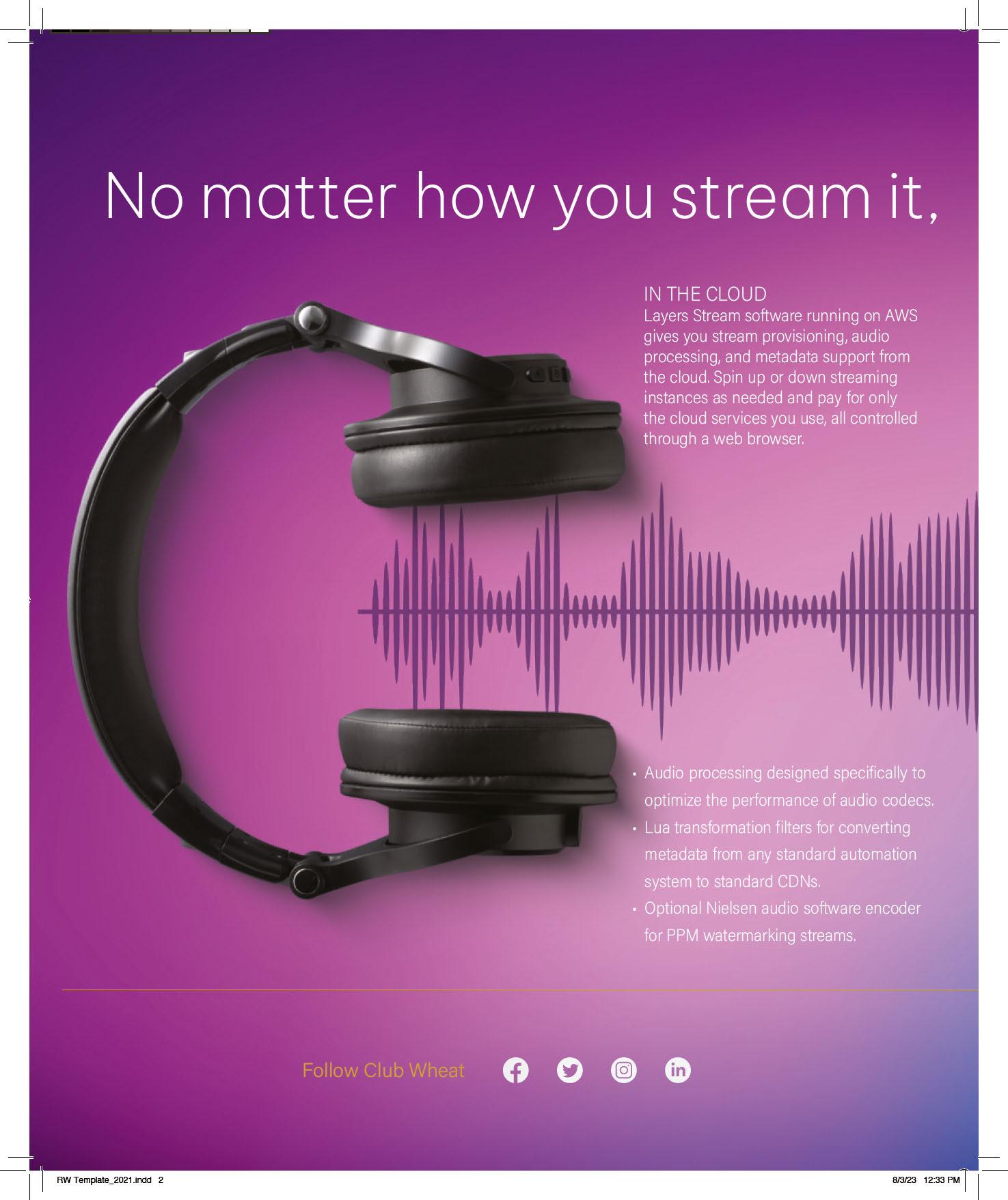

But after the 2021 LPTV digital transition, newly digital stations that had been providing FM6 service were no longer able to reach analog radio audiences through these TV transmissions.
However, 13 stations remained on the air under special temporary authority, subject to a set of rules laid out by the FCC for this situation. Among other things they had to convert to ATSC 3.0 digital; provide at least one video stream on the ATSC 3.0 portion; operate on a noninterference basis; and provide audio and video coverage to similar populations.
Rosenworcel said that this kept the stations on the air “with the equivalent of regulatory gum and baling wire. Now it is time for something sturdier and more permanent.”
She said, “We have had two years of experience with this arrangement and no incidents of interference with television operations and adjacent licensees, including other stations on FM radio. … [W]e know in a world where content feels like it is everywhere, there is still something special about local radio and a signal in the air.”
Those 13 are grandfathered in as ancillary or supplementary services. They are KBKF, San Jose, Calif. (whose STA request appears to have set the precedent for this group); WMTO, Norfolk, Va.; KXDP, Denver, Colo.; WTBS, Atlanta, Ga.; WRME, Chicago, Ill.; KZNO, Big Bear Lake, Calif.; KEFM, Sacramento, Calif.; WEYS, Miami, Fla.; WDCN, Fairfax, Va.; KRPE, San Diego, Calif.; KGHD, Las Vegas, Nev.; WPGF, Memphis, Tenn.; and WNYZ, New York, N.Y. Most if not all of them operate on a commercial basis.
The FCC also authorized WVOA in Westvale, N.Y., which it allowed under special circumstances; the station will have to operate under an STA until the commission determines that interference won’t be an issue.
But the order declines to allow other past FM6 operators to come back on or allow new ones. WJMF in Jackson, Miss., and KBFW in Arlington, Texas, are two that wanted to resume service but won’t be allowed.

Public service cited
The commission wrote that the 14 broadcasters have maintained a close connection with the communities they serve. “Listeners have tuned to existing FM6 LPTV stations for foreign language, religious and sports programming; programming intended to support historically underserved populations such as native Spanish speakers, immigrant populations; and programming designed for niche music audiences. In addition, existing FM6 LPTV stations provide emergency
and public safety information that their listeners have come to rely upon in times of disasters.”
Rosenworcel name-checked WDCN in northern Virginia near Washington, D.C., citing its programming to people with roots in Central America including El Salvador, Honduras and Guatemala.
Most of the STA requirements will remain in place as permanent rules for the 14 stations. The commission believes this will ensure that they “are first and foremost LPTV stations and that their video programming stream is prioritized over any audio stream,” rather than operating with minimal video services.
The stations must operate on 87.75 MHz; the FCC declined to allow any at 87.7. They must be able to air EAS alerts separately on their television and their FM6 operations. And although LPTVs are not otherwise required to maintain online public inspection files, they’ll have to keep one for FM6 operations.
Under the order, these FM6 stations can be assigned or transferred. Modifications to their technical facilities are allowable only within the current protected contours or in special circumstances like loss of a tower site.
The FM6 stations had picked up the moniker “Frankens” after Radio World began using a term that had appeared on an engineering listserv. The name referenced what some saw as an unholy pairing of two types of broadcast licenses, akin to the cobbled-together nature of Frankenstein’s monster.
The commission did not accept a proposal from NPR to repurpose the 82–88 MHz spectrum for FM services in locations where channels are not being used for TV programming. And it did not act on an NPR proposal to allow existing NCE FM stations to relocate to 87.9 MHz. “As this change could impact our revisions to the TV6 interference rules, we find that it would be more appropriate to consider NPR’s proposal in conjunction with a future TV6 interference proceeding.”
“
18 radioworld.com | September 1 2023 Franken FM
In a world where content feels like it is everywhere, there is still something special about local radio and a signal in the air. ”
 Writer
Writer
Alpha lets AI Ashley do (some) talking in Portland
Broadcaster is using generative AI DJ on limited basis
Being first at anything important usually carries risk, which is why Alpha Media is still taking baby steps when it comes to crafting a long-term strategy for using AI and synthetic voices on air.
The company’s CHR station KBFF(FM) in Portland, Ore., jumped to the cutting edge of broadcast as being the first in the United States (at least publicly) to deploy a radio voice created by AI, using RadioGPT technology from Futuri Media. In June the company began using a cloned voice of midday personality Ashley Elzinga, dubbed AI Ashley, to handle at least some of the midday duties on “Live 95.5.”
(Listen to an air check at https://tinyurl.com/rw-ashley.)
In August we checked in with Alpha for an update. The company is not using AI Ashley on a daily basis. The synthetic voice is deployed in limited circumstances, according to Content Director Dylan Salisbury — for instance if Elzinga’s internet goes down and she is unable to voice-track her show, or if she goes on vacation, “or for a very timely local break.”
Elzinga is based in northern Michigan and also hosts mornings on WKHQ(FM) in Traverse City, Mich., and nights on KQMV(FM) in Seattle.

Alpha Media says it has been transparent about the use of generative AI and a synthetic voice; it says it has adopted a hybrid approach to using the technology.

The company says its aim is not to replace Elzinga with AI Ashley but rather extend her brand. KBFF’s midday show features mostly voice-tracks created by Elzinga (who goes by Ashley Z on the air) and occasionally the synthetic voice. Both identify themselves on air to make it clear to the listener.

The tool does not have free rein. AI Ashley is all text to voice, Salisbury says. “As of right now, everything that you hear her say is what I write. As you can imagine, that takes a lot of time. You need to come up with the copy, and usually a rewrite or two. Then generate. Usually followed by another handful of re-generates due to mispronunciation or weird inflection. Then download. Then open in Adobe Audition software, edit it then dub into Wide Orbit. We are finding a single five-hour show can take nearly two hours to produce.”
But AI Ashley is at a point where Salisbury can set up prompts through Futuri’s RadioGPT that auto-generate breaks, he said. “The problem with this is, much like ChatGPT, it isn’t up to date with the latest in news and
Randy J. Stine
LinkedIn Right
Radio World’s lead news contributor wrote about the FCC’s upcoming low-power FM application window in the previous issue.
The real Ashley Elzinga
20 radioworld.com | September 1 2023 Artificial Intelligence
BlackJack3D/Getty Images

entertainment, so all the artist info you get is typically a year or two old,” he said.
Eventually, Alpha plans to bolster AI Ashley with Futuri’s predictive AI platform TopicPulse. That tool scans for hot topics on social media that will be used to create talking points for the synthetic personality.
Feedback on social media to the June launch of AI Ashley was sour, with many users posting negative reviews of on-air AI. Broadcast industry comment has been guarded. Most major radio groups are not openly commenting on Alpha’s use of an AI jock. iHeartMedia CEO Bob Pittman has cautioned against the use of AI on-air in place of human talent, yet he also has said that iHeart plans to use AI “to its fullest” and that doing so could “fundamentally change the cost structure of the company.”
In the weeks since the launch of the cloned voice on KBFF, Alpha executives have had time to further contemplate the significance of the moment and appear more resolute than ever that using AI in certain situations will present long-term benefits for radio operators.

Meanwhile, the AI tool has been the subject of TV reports and newspaper stories, all examining the ethical implications of using synthetic voice in place of human voices in broadcast and any potential risk.
Ratings eventually will tell if a station’s listeners buy the concept, observers say. Portland is radio market No. 21.
According to Nielsen top-line data based on PPM, KBFF for both June and July had a 3.0 AQH share with persons 6+, Mon-Sun 6 a.m. to midnight. That places the music station 15th overall in the market.
See related story, right.
Alpha Media finds AI to be “additive”
Our early takeaways on the launch of AI Ashley have been incredibly promising,” said Phil Becker, executive VP of content at Alpha Media.
“We have more timely and local content; we can move with immediacy formerly not available, and we find it very additive to what we do.”
Radio World asked Becker about the effectiveness so far of AI Ashley, whether Alpha is considering using the technology on more of its stations and how he answers naysayers on social media. He answered via email.
Reaction to AI Ashley, at least on social media, has been primarily negative. How do you respond to the objections that have been raised?
Becker: Social media has an echo chamber effect, where like-minded
individuals often reinforce each other’s opinions, leading to a skewed perception of the actual reception. The silent majority, who are content or have positive experiences with AI Ashley, may not feel compelled to speak up on social media.
I am grateful to see the radio industry in the conversation again at the public dinner table. If AI Ashley has evoked an emotion that reinvigorated radio for even a moment, that’s a positive.
Is the company collecting feedback from listeners or conducting focus groups to help make determinations going forward?
Becker: As the famous Steve Jobs quote says, “People don’t know what they want until you show it to them.” Now that AI Ashley is on the station, we can discuss this accurately with focus groups and others.
Why launch AI Ashley in the first place? Do you think it will improve ratings and bring in listeners?
Becker: With the growing popularity of AI-driven content, we saw an opportunity to differentiate ourselves and maintain a competitive edge by introducing AI Ashley to KBFF.
While the introduction of AI Ashley has the potential to improve ratings and bring in new listeners, its success depends on the core fundamentals of all programming decisions, including execution, the viability of the content, building brand awareness and so on. On one of my recent podcasts I delve into artificial intelligence and its impact on the radio and media industry. [Becker’s podcast “Phil-Osophy with Phil Becker” is available on Spotify.]
“ 22 Artificial Intelligence
Portland is a PPM market; what is the ratings impact so far?


Becker: (In late July) we received our first rating period with AI Ashley at the helm, and we hit an 18-month high for her daypart. While this is too small of a sample size to qualify as a success, it is a wonderful start. We also saw our stream starts increase dramatically upon AI Ashley’s arrival. So thus far, we are pleased with the early results.





You said you’re being transparent about its use on air. What are you telling listeners? Becker: The AI Ashley always identifies herself as such. Because it’s the right thing to do.



Futuri says it has AI products that can do other jobs around the station, like writing copy and production. Is Alpha using it for those applications yet, or is it considering doing so?

Becker: We are aware of those products but are currently not using any AI software beyond RadioGPT. We are open-minded to what else might be offered, but we’d need to learn more about the products.


Have you or would you consider using cloned voices on other Alpha stations? Becker: We have yet to discuss expanding beyond one station in one market on one daypart.









“
”
I am grateful to see the radio industry in the conversation again at the public dinner table.
Artificial Intelligence
Left Phil Becker
Problem-Solvers & Utility Boxes
About Buyer’s Guide
The Buyer’s Guide section appears in every other issue, focusing on a particular category of equipment and services. It is intended to help buyers know what’s on the market and gain insight into how their peers are using such products.
Tech Update
Mike Alert Supports M!ka Control
Henry Engineering’s Mike Alert facilitates controlling and interfacing the two-color tally lights used on M!ka microphone support arms made by Yellowtec.
“These popular mic arms have two tally lights that are visible to the user,” Henry notes.
“One light is white, the other is red. In many installations, the white light is used to indicate a ‘ready’ condition, e.g., the mic has been assigned to a console channel. The red light is used conventionally, to indicate ‘on air’ or that the mic is live.”
Henry notes that the M!ka arm uses a five-conductor cable, often terminated to a five-pin male XLR connector. Three wires are used for mic audio, and the two remaining wires are used for both the white and red tally lights.
“The two LED tally lights are wired with opposing polarity, so that reversing the polarity
Tech Update
of the control voltage determines which light, white or red, will be on. This often causes interface headaches, since console Tally outputs don’t provide any means of polarity reversal.”
Mike Alert is intended to help. The unit provides the power and control circuitry to interface the mic arm to the Tally outputs of any console, router or other equipment. Both the microphone audio and tally circuits are interfaced, with automatic polarity control to correctly operate the white and red tally indicators.
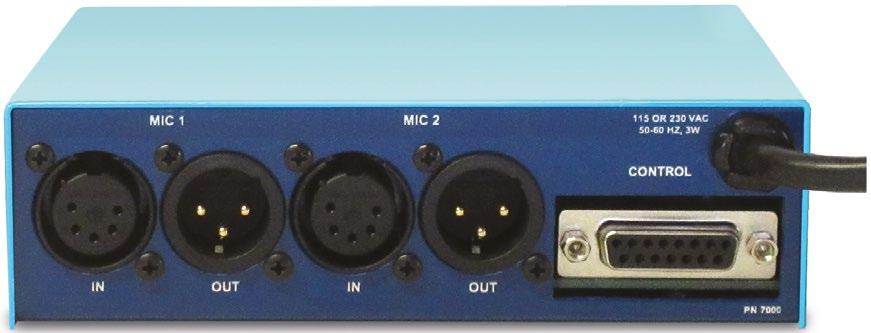
There are two independent GPI control inputs: one to activate the White tally LEDs and another one to activate the Red LEDs.
Henry says Mike Alert is universally compatible with any console or equipment that provides a GPI contact closure, open collector, logic or DC voltage for Tally light control. Each unit can control two mic arms. Price: $325.

Info: www.henryeng.com
Inovonics Expands SiteStreamer Family

Inovonics is growing its line of problem-solvers for remote monitoring of off-air transmissions.
“How do you know what you don’t know?” the company asks. So the SiteStreamer family of remote monitor-receivers is intended for radio broadcasters who want to know if their off-air transmissions are broadcasting correctly.
“Inovonics SiteStreamers are web-enabled receivers installed at the transmitter site for
remote signal monitoring, allowing broadcasters to remotely tune in and listen to a live off-air stream,” it says. “Alarms and notifications can be set up for email and SMS advisories.”
They are available in many flavors such as FM, AM and HD Radio. Now Inovonics has added the Model 563 for digital DAB+ transmissions. “The Sofia is like a super SiteStreamer with more horsepower and features for critical monitoring situations,” it says. Features include display of graphics and related text data on a web interface. Output levels are adjustable for LR Analog, AES3-digital and Dante/AES67 AoIP. Up to 10 listeners at once can listen on internet streams. Multiple transmissions can be monitored sequentially with StationRotation. Alarms and notifications can be sent via email or SMS messaging.
Info: www.inovonicsbroadcast.com
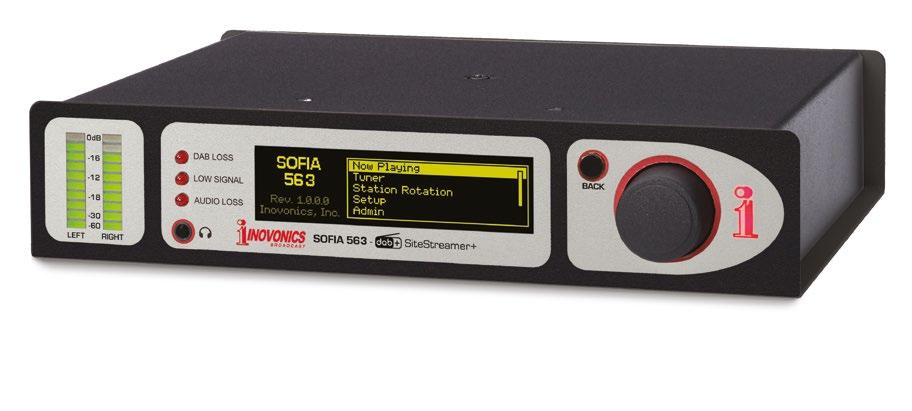
24
Tech Update

Broadcast Tools Offers Box O’ Relays 6



In the footsteps of the Broadcast Tools Box O’ Relays 4, released 12 years ago, Broadcast Tools has released a new GPIO problem-solver: the Box O’ Relays 6, a six-channel opto-isolated relay module.



The Box O’ Relays 6 is suitable for converting GPO outputs from AoIP systems and other devices to dry contact closures. Its six SPDT relay outputs can be configured for independent operation, or for flip-flop (set/reset) operation in pairs, and are available via pluggable screw terminal block connectors for ease of installation. The relays are rated up to 30V at 1 amp, suitable for controlling on-air lights, LED indicators and other externally powered devices. Six optically isolated inputs are available via an RJ45 input jack as well as pluggable screw terminal block connectors and can be configured via to interface with dry contact closures, open collector outputs, as well as voltages from 3.3–24 VDC, or 25–48 VDC via an external resistor.
You can convert Wheatstone Blade logic









outputs (GPOs) to contact closures. The RJ45 input jack on the Box O’ Relays 6 is compatible with the RJ45 logic jacks on WheatNet Blades. The Box O’ Relays 6 allows the user to convert six WheatNet Blade logic outputs (GPOs), on one Cat-5/6 cable to six isolated SPDT dry contact closure outputs on pluggable screw terminal blocks.

You also can convert GPIO xNode general purpose outputs (GPOs) to contact closures. Using the optional Broadcast Tools COA-15/RJ DB-15 to dual RJ45 adapter you can interface an xNode GPIO port with the Box O’ Relays 6 via standard Cat-5/6 cabling converting the port’s five GPOs to five isolated SPDT dry contact closure outputs on pluggable screw terminal blocks. The COA-15/RJ also breaks out the GPIs to their own RJ45 jack for ease of installation.
A surge-protected universal switching desktop power supply with an IEC AC inlet is included. Three units may be mounted on the optional Broadcast Tools “RA-1” 1RU rack shelf.

Info: www.broadcasttools.com.








25 Buyer ’s Guide
Tech Update
Blade 4: Essential Studio Elements in 1RU
Wheatstone says the Blade 4, shown below, is evidence that you can solve a lot of problems by integrating all essential studio elements into one unit.


“This is the only AoIP I/O unit that includes in 1RU audio processing, codecs, mixing, routing, control and even a builtin OS. By bringing together I/O, audio tools and intelligence in one unit, Blade 4 can solve all the essential studio requirements that happen on the regular as well as all those unexpected or occasional problems that crop up from time to time in a busy studio.”
For example, if you need to run a quick remote feed into the studio, you can select one of the two Opus, MP3 or AAC codecs built into the Blade 4. To add metering or another app, you can run scripts, metering and software applications directly on the Blade 4 unit, with no PC required.
To route audio through a separate AES67 device at the ballpark, use the AES67 interface in the Blade 4 for interoperable routing. To add a second network switch to the facility, Blade 4 has two

network ports for redundancy or A/B switches, along with dual power supplies.

To create a backup offsite studio for emergencies, add a Blade 4 to your transmitter site(s) for automatic failover during an emergency, each their own native AoIP environment with audio codecs, processing, routing and control as well as audio clip players with USB ports for emergency announcements.
The image above is a meter app, one of many apps that can run on the Blade 4 without requiring a separate PC.


Tech Update

Reconfigure a Cat-5 With RAM Systems
“Have you ever needed to change the wiring configuration of a Cat-5 cable?” asks RAM Systems. “Now you can with the RJ45F/Config.”

This box provides female RJ45 connectors for input and output and two eight-pin terminal blocks for configuration modification. The cable shield is carried through.
This problem-solver in a blue molded plastic enclosure is 6 inches wide, 2 inches deep and 1 inch high.
RAM Systems also offers custom furniture, sound absorption products, master clocks and timers, speaker mounts, mic boom tallies and a number of other solutions.
Info: www.ram68.com

nautel.com/HD HD MULTICAST+ Combined Importer/Exporter with optional Orban audio cards
26 radioworld.com | September 1 2023 Buyer ’s Guide
Info: wheatstone.com
Tech Update
Angry Audio Gets SMooth
Angry Audio is shipping the latest addition to its Chameleon line of The company notes that the SM Series dynamic microphone has millions of fans. “Many of them benefit from a little compression, maybe some gating to quiet background noise, a little EQ, even some sibilance control. SMooth delivers with a minimum of tweaking so they can concentrate on the message.”
The processor uses advanced DSP and programming by Cornelius Gould. Its precision mic preamp is clean and provides plenty of gain. Both analog and AES digital outputs appear on the back panel. Logic functions are provided to remotely turn the mic On or Off, or act as a Cough Button. SMooth can be mounted on the desk or in a rack. MSRP is $889.



What about other mics? “We expect to hear it a lot,” said the company’s Mike Uhl. “We have focused on the Shure product because it is so popular these days. And we are already working on a different product for the ElectroVoice Series microphones that we call Rebel. This will be a limited line of processors for professionals.”
Info: https://angryaudio.com/


27 radioworld.com | September 1 2023 Buyer ’s Guide










28 radioworld.com | September 1 2023
More Info
This commentary appeared in the newsletter of the Peekskill Cortlandt Amateur Radio Association, “PCARA Update.” See more at http:// nm9j.com/ pcara/newslett. htm.
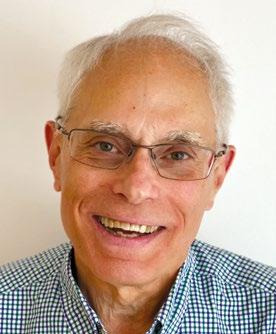
AM listening
What was once called radio is now referred to as audio. RF is being replaced by the internet. The delivery system may be new but the message still gets through.
Driving a newly minted Tesla Model

3, I have discovered so much about this new world.
For one thing, news of AM radio’s demise was premature. Yes, the over-the-air receiver has been removed in the Tesla. But the AM experience continues — and actually is better than ever.
The onboard TuneIn app provides almost all of my local AM stations, listed with station details, by format and location or listed by genre. Distribution by internet is more cost-effective and more robust. Forget static and noise. It’s digital! AM has actually taken a great leap forward.
Use the car’s touchscreen, just touch the icons of stations you desire. Voilà! You’ll hear AM, FM, streaming and even shortwave, in perfect static-free audio.
The experience is high fidelity and easy on the ears. You will not miss the fading or loud bursts of noise we are so accustomed to. It is so much better than using mediumwave RF to find a signal.
Introduced in 2002, TuneIn has grown to become a megalith in audio distribution, offering 100,000 radio stations and a similar number of podcasts.
Of course, there are non-conformists. Missing from TuneIn for a while was the Audacy group. But although the Tesla doesn’t have an AM receiver and Audacy was
than
missing from TuneIn, you could listen to stations like New York’s WCBS(AM) via the station’s web stream, because the vehicle’s entertainment and media suite has a internet browser including audio.
And now Audacy has put its 250 station streams and podcast library back on TuneIn.
Global reach
Playing with TuneIn, I found my worldwide favorites: BBC Radio Scotland, WSM Nashville, OZFM Newfoundland, Radio New Zealand, CHML Hamilton, Ontario, and WLEW Bad Axe, Mich. I even discovered Al Weiner’s shortwave station WBCQ The Planet in static-free stereo. If it’s on the air, it’s probably on TuneIn.
When using the search bar, you may have to try various monikers. For example CFRB 1010 Toronto is called up only as “Newstalk 1010.”
You’ll enjoy the direct tuning feature. Call up the touchscreen’s numeric keyboard and enter any frequency. It will even accept offset tuning like 102.2 or 98.6 should you encounter overseas deep multiple E-skip or F layer skip. (Dream on, Karl!)
For more news, TuneIn includes feeds of “TV” audio including ABC News, CNN, MSNBC, CNBC, Fox News, NBC News Now, SkyNews, WSJ Radio, CBS News, Bloomberg Radio, AP News and Newsmax.
Another tip: Use geography as a time-shifter. If you like “Coast to Coast AM” overnight but are usually asleep, you can listen to KFI Los Angeles and hear the first three hours
Writer
Karl Zuk
is better
ever … in my Tesla!
Here’s
how streaming has changed my DXing
29 radioworld.com | September 1 2023 Radio Listening
of the show starting at 5 a.m. Eastern time. (Remember, it’s only 2 a.m. in L.A.) Conversely, with TuneIn I can listen to New York City stations from afar.
The Tesla media suite offers two other powerful audio apps: Spotify and Apple Music. Subscriptions are necessary to enjoy the premium experience, but they provide gigantic libraries of music and talk.
Note that Tesla uses your smartphone as your link to the outside world. Your phone serves as your ignition key; it also can remotely monitor the vehicle’s location and level of charge and other attributes. And it is your link to the internet.
Your phone battery will never be depleted. The dashboard console includes two passive Qi charging cradles; rest your phone on the pad and induction charging does the rest.
To access personal preferences, call up your audio wishes through your phone’s Bluetooth link. My iPhone has replaced my trusty 20-year-old iPod. With a terabyte of onboard memory, I have stored my leviathan music collection locally at my fingertips wherever I go.
Amazing FM tuner
The miracles don’t end with internet-delivered audio.
Imagine driving a car that included a tall tower and automatically steering multi-stack antenna array. The Tesla FM tuner provides similar reception with a miraculous physical design and cutting-edge circuitry. This tuner can only be called magical in performance. It can lift the weakest signals into quite listenable broadcasts. From my QTH near Ridgefield, Conn., I now have a good grasp on stations from the Hartford/ Springfield and Albany/Schenectady/Troy markets, all of Eastern Long Island and everything in between. I suspect I am experiencing a combination of an advanced DSP system and a pre-amplified antenna.
The reception possibilities are unbridled. The Tesla chassis uses a high-tech full-glass moonroof that extends from the driver’s view to the full rear of the vehicle. The FM antenna is incorporated into the rear hatch glass.
The reception is memorable. There is no need to perform time-consuming scans to see what is available. The touchscreen constantly updates, instantly showing you all the FM stations you can reach complete with color logos and descriptions of each.
This would be a fun feature during tropo-lifts and E-skip. You could watch and immediately identify all that is being received without tuning to each frequency or watching a waterfall display. I would love to see this tuner in action while sitting atop Bear Mountain. Your log would have an entry for every FM frequency.
It was thrilling to witness all the stations the tuner can resolve. You will delight in endless moments of discovery as it uncovers stations you never knew existed — much less have them within your grasp. I felt like a child at a carnival consumed with marvel while watching a clever magician. “Hey tuner! How did you do that?”
How to submit Radio World welcomes comment on all relevant topics. Email radioworld@ futurenet.com with “Letter to the Editor” in the subject field.
The tuner includes digital HD Radio decoding with equally remarkable signal locking. Its depth of signal attainment makes HD Radio a viable medium. Now you can drive around and still keep WCBS 88 101.1 HD2 locked in. Did you think you would see the day?
Tesla is not erasing 100 years of radio history. They are gently leading us to a future filled with possibilities, fidelity and fun.
Sweet streaming
I see streaming rapidly becoming the standard of delivery for audio and video media. The new business model requires program producers to run lean and efficient operations. Analog dollars have turned into digital dimes or pennies. Being cost-effective and following a strict financial model is a matter of survival.
Today’s station owners need to plan for future challenges. Smart operators should consider divesting their real estate holdings and condense their expenses. I believe tall steel towers, expensive transmission equipment and complex production facilities are becoming obsolete and impractical; the distribution system eats capital and profits. Dependence on nationwide syndicated programming only makes sense. The public is becoming more and more attuned to streaming media.
Car entertainment and media systems also need to adapt to receive this programming. Wireless internet distribution networks are gaining sophistication and coverage. The reach of the internet will only get better. Experience proves how reliable reception can be.
Did you ever think you could listen to a symphony live from New Zealand in high-fidelity stereo in a moving car driving through New York? Today, we can hold the radio and television of the future in the palm of our hands, and it includes a telephone, too. What a wonderful world it has become.
 Above A sampling of stations that can be accessed in my Tesla.
Above A sampling of stations that can be accessed in my Tesla.
30 radioworld.com | September 1 2023 Radio Listening

meow
Well...not really. Our LiON has the latest Wheatstone DSP algorithms; it is not a 90’s era processor by any means. The AUDIOARTS LiON Five-Band Processor/Multipath Controller has WheatNet-IP, so it can be networked. It has analog and AES3 so it can stand alone. It has Wheatstone SystemLink™ built in, to send full 24-bit linear audio directly to your transmitter over reliable high-speed links — Baseband 192 MPX with FM+HD timing locked (no codec to degrade audio quality). And it comes with 50 presets so you can plug and play. Let your signal ROAR on a kitten budget!

SO...what’s really in the box?
ALL SIGNAL PATHS
• Analog, AES3 and Wheatnet-IP audio
• AES3 input accepts 32kHz to 96kHz sample rates
• Variable high pass filter and voice phase rotator
• Dynamic L/R correlation meter for proper stereo channel phase
• Front panel setup
• PC-based GUI included
• Ethernet-based remote control
• Four-band equalizer: low/high shelf plus two-band parametric
• User-adjustable multiband crossover frequencies
• Independent multiband compressor and leveler can be operated separately or in combination
• Multiband spectral manager
• Newly developed bass management
• High-performance low distortion multiband limiters
• Metering for all input and output levels and dynamics processing
FM PATH
• New distortion-masked FM peak clipper
• Specialized live voice algorithm minimizes vocal distortion
• Exclusive stereo multipath controller
• RDS/RBDS generator, static and dynamic
• Precision FM stereo MPX generator with multiplex mask filter
• Baseband192 built in for 192kHz digital MPX link to transmitter
• Support for ITU.BS-412 MPX
• Ten seconds of FM/HD diversity delay
• Test oscillator
HD/STREAM PATH
• Low/high shelf plus two-band parametric equalizer
• HD/Stream final processing accepts audio from unprocessed input, output of AGC, or output from multiband limiters
• Oversampled precision look-ahead limiters for exceptional final peak control
• Specialized dynamic high frequency protection for low bitrate codecs; also operates in wideband (>12kHz) and <12kHz modes
• ITU-BS.1770 loudness metering and controller
Manufactured in North Carolina USA









 Right David and Tina Tucker
Right David and Tina Tucker






















 Writer Paul McLane Editor in Chief
Writer Paul McLane Editor in Chief










 Writer
Writer













































































 Above A sampling of stations that can be accessed in my Tesla.
Above A sampling of stations that can be accessed in my Tesla.
